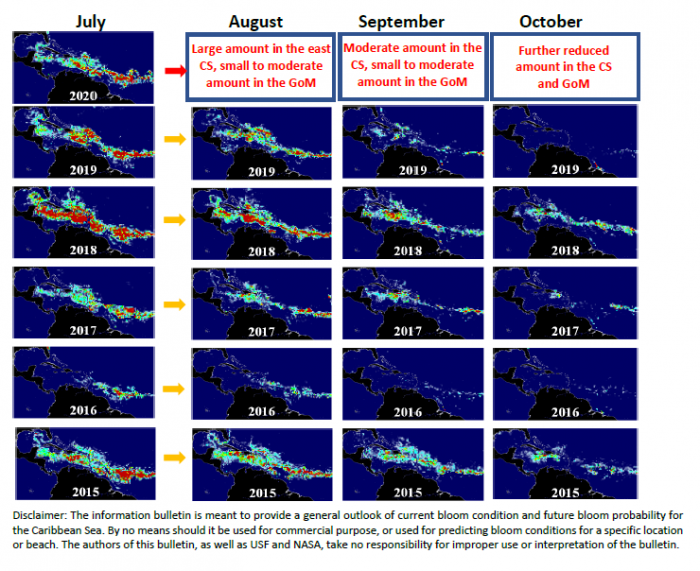The maps below show Sargassum abundance, with warm colors representing high abundance.

In July 2020, the overall Sargassum amount decreased across the central Atlantic. This is unusual, as in previous years July often had higher amount than June. Yet large amount was still observed in July 2020 in the Central West Atlantic (CWA, i.e., the region east of the Lesser Antilles in the maps below), the Central East Atlantic (CEA), and most of the Caribbean Sea (CS). Beaching events in some Caribbean islands continued. Sargassum transport to the Gulf of Mexico (GoM) also continued, with large amounts found in the Florida Straits and along the east coast of Florida. Miami experienced significant beaching. In all regions combined, the total Sargassum amount decreased from 12.6 M tons in June to 8.0 M metric tons in July, lower than July 2018, July 2015 and July 2019.
Looking ahead, the eastern Caribbean will continue to see large to moderate amounts of Sargassum in August to September 2020 with many beaching events. The western Caribbean will experience less amount of Sargassum. The situation is expected to be similar to summer 2019, but with lower Sargassum amounts. In August – September, Sargassum will continue to reach the eastern GOM, enter the Florida Straits, and transport to the east coast of Florida, but the amount is much reduced. The bloom may continue to decrease in the coming months.
More updates will be provided by the end of August 2020, and more information and imagery can be found from the Sargassum Watch System
(SaWS, https://optics.marine.usf.edu/projects/saws.html )


